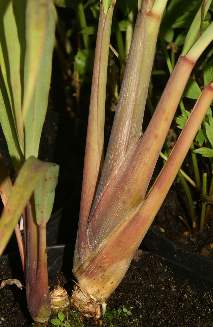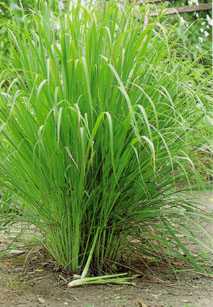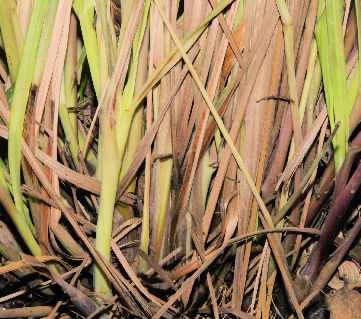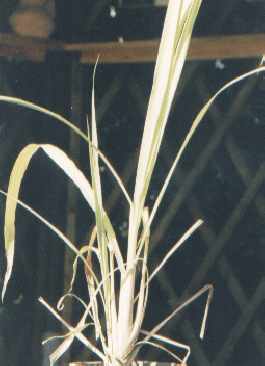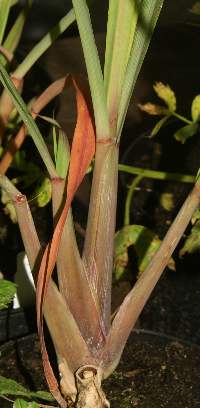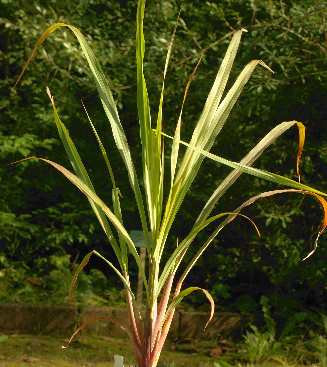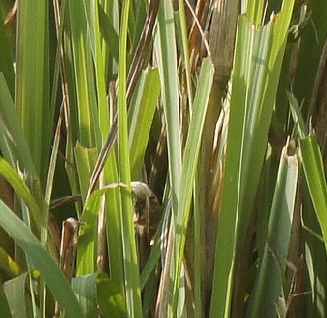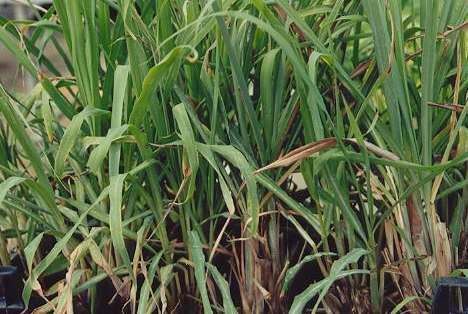
|
| Lemon grass |
Vietnamese cookery, being much less spiced, makes use of lemon grass in several
ways. A popular Vietnamese meal is bo nhung dam [bò nhúng dấm], often
translated vinegar beef
or Vietnamese fondue
. At the table, each diner
boils thin slices of beef in a vinegar-flavoured broth containing ample lemon
grass. The beef is then, together with fresh vegetables and herbs (coriander, mint and Vietnamese coriander), wrapped in rice paper and eaten
with spicy sauces based on fish sauce (nuoc mam [nước mắm]),
lime juice, peanuts and chiles. This recipe demonstrates the
Vietnamese preference for communal foods (prepared together at the table), for wrapped bits of food and for fresh herbs. Lemon
grass is also used for Vietnamese curries, see rice
paddy herb.
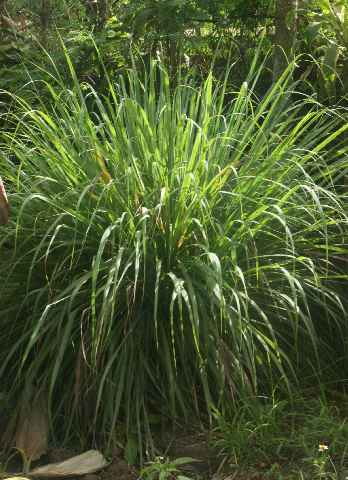
|
| Lemon grass |
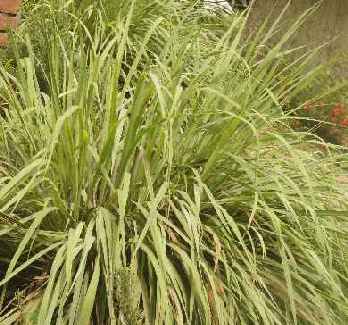
|
| Bush of lemon grass |
In Indonesia, the term bumbu (spelled boemboe in Dutch) refers to mixtures of ground fresh spices, whose composition is unique for every single dish. In Bali, they are called jangkap (see Indonesian bay-leaf for details). Bumbu is made by grinding spices together in a mortar: Onions provide the background, and garlic, chiles and nuts (most popular is the Indonesian kemiri, also known as candle nut) are rarely missing. Further common ingredients are greater and lesser galangale, turmeric, ginger, kaffir lime leaves, Indonesian bay-leaves and lemon grass. Dried spices are of minor importance, although coriander and black pepper are occasionally mentioned, and some recipes even employ nutmeg or cloves. On Jawa and Bali, toasted or fried trassi (shrimp paste) is never omitted. Bumbu is used either raw or having been stir-fried for a few minutes.
Often, vegetables are simply cooked in a little water, stock or coconut milk together with bumbu; meat, on the other hand, is more frequently rubbed with bumbu and fried or broiled (e. g., sate, the famous skewers; see lesser galangale for another example). Gravies can be intensified by adding one or two tablespoons of bumbu before serving. Bumbu dissolved in meat broth makes the basis for most Indonesian soups (e. g., the ubiquitous chicken soup soto ayam) and also for Malaysian laksa (see Vietnamese coriander). Lastly, fried bumbu can be used as a condiment.
Further information on the cuisines of Indonesia can be found at Indonesian bay-leaf and lesser galangale (Bali), greater galangale and Sichuan pepper (Sumatra), coconut (Sulawesi), tamarind (Jawa) and mango about the pan-Indonesian fruit salad rujak.
The pleasant aroma of lemon grass is never dominating; it can be substituted by
lemon balm (though it is, of course, not the same),
but not by lime fruits, kaffir lime leaves or lemon
myrtle, which are much more dominant.

